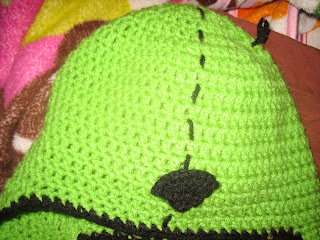In order to understand the following e-mail, you should probably be aware that I am a pack rat and I have a high tolerance for clutter. My housemate, X*, does not. X* is one of the most organized and and ridiculously intense cleaners I have ever met. My second housemate, Y*, is tidy as well, though not quite as intense as X*. Anyway, yesterday I received this e-mail from my housemate. I realize that my intense, fridge cleaning housemate has a point, and justifiably it would not be fun to be the one cleaning out the fridge, but this e-mail was hilarious. I had to stop reading several times because I was laughing so hard.
*names have been changed to letters to protect the identities of the two offending housemates ;)
-----------------------
Last night I took advantage of both of you leaving for the holidays and performed the fridge's yearly cleaning, and I have to say that you two are disgusting and I cannot believe I share a fridge with either of you. Y*, the food you told me I could eat if it looked like it would go bad before you returned had all already gone bad. Those were Thanksgiving leftovers! Z*, I understand why you would not want to finish those prepackaged hard boiled eggs after trying a couple, but why would you leave the still open package in your drawer and how long ago was that?! These are just a couple of examples of the many repugnant odors and colorful molds I discovered last night. Also, last year I kept items with long shelf lives, e.g. anything vinegar based, even if they were a few months past their expiration date, but this year, rather than wonder if any of these items were still good one year and a few months past their expiration date, I just threw them out because they obviously are not being eaten. This includes the salad dressing, which has been in the fridge since before Z* moved in, that X* wanted to keep incase he ever started eating salad, and a jar of pickles in the back of Z's* shelf that expired in June which she must have brought with her when she moved in because all my pickled food, which I bought this year, isn't dated to expire until 2014. Both of your shelves are nearly empty now because you both had more spoiled food then edible food on them. So like I said, you two are disgusting, my nose is scarred, and I want my own fridge. Merry Christmas.
X*
-----------------------
Since I do not have any pictures of the fridge cleaning incident, I decided instead to share another interesting micro organism story. Can you identify the shape of the bacterial colonies in this picture? Here's a hint, the cut off words say "kiss plate."
Yes, all those little white blobs are bacteria that came from my lips and the tip of my nose. A little creepy. The bacteria are growing in a gel medium that was placed in an incubator for several days so that the colonies could flourish. This experiment was for a biology 101 lab looking at micro organisms and antibiotics. It is frightening to think about all the micro organisms surrounding us everyday, but luckily most are harmless pass us by completely unnoticed.
Hopefully X* won't be too mad by the time we all get back from our
holiday traveling. I will have to get him a nice gift, something
without any multi-colored mold.





























































